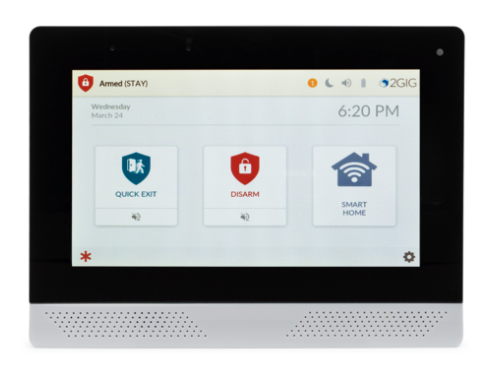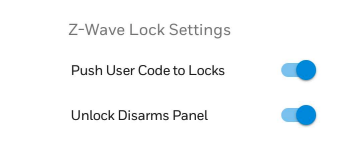Alarm Grid's distributor now has the Qolsys IQ Panel 4 in white available with the 345 MHz receiver in both the AT&T and Verizon versions. The same panel, in black, will soon be available. This panel supports both the legacy 345 MHz 2GIG and Honeywell RF sensors and the DSC PowerG sensors.
If you're looking to upgrade from a panel with either 2GIG or Honeywell 345 MHz sensors, or maybe a combination of both, then you should check out the Qolsys IQ Panel 4, now available, with support for these older wireless sensors. The IQ Panel 4 is an upgrade from the Qolsys IQ Panel 2 with a newer OS, more memory, and a faster processor.
At the center of the Qolsys IQ Panel 4 is a Qualcomm MSM8953 chipset with an 8-core Qualcomm SnapDragon Processor. It has 16 GB of NAND Flash memory. The base operating system is Android 9. By comparison, the IQ Panel 2 and 2 Plus used Android 5.1 as a base, with a quad-core processor. These updates in hardware and software for the IQ Panel 4 mean that it has tons of expansion capability, with the hardware and software to support it. Updated hardware supports updated software as well as new features. Expect lots of updates to this system, much of it based on customer feedback.
There are other updates too. The front-facing camera has been upgraded from 5MP to 8MP. In addition to a higher resolution, the camera also has a wider 120° viewing angle allowing it to capture more context with disarm images and peek-ins. The vertical tilt angle of the camera can be manually adjusted by the user to dial-in the best angle for disarm photos based on the height of panel users.
The Qolsys IQ Panel 4 has support for up to 128 zones, using PowerG and/or Honeywell or 2GIG 345 MHz RF sensors. This makes it the perfect replacement for an older Honeywell or 2GIG system with working sensors still installed. PowerG sensors, manufactured by DSC, are fully encrypted with 128-bit AES encryption and are also supported on every version of the Qolsys IQ Panel 4. They have an open-air range of up to 4,000' (1219m) when used with this panel. And in the unlikely event that you still have a range issue, there are PowerG Repeaters available to boost the range.
The Newest IQ Panel 4 Versions and Kits, now available from Alarm Grid:
Each of the unencrypted kits listed above includes the Versa-2GIG Door/Window Sensors. In the 3-1 kits, there are three (3) of these, in the 10-1 kits there are ten (10). These kits also include one (1) DSC PG9914 PowerG PIR motion sensor. The encrypted kits listed above contain either three (3) or ten (10) DSC PG9303 PowerG Door/Window Sensors, and one (1) DSC PG9914 PowerG PIR. The 3-1 kits are a great start for installations in apartments and small homes, while the 10-1 kits are great for larger homes and small businesses.
With its 700-Series Z-Wave Plus V2 controller, up to 137 Z-Wave, Z-Wave Plus, and Z-Wave Plus V2 devices can be integrated with the system. This includes Lights, Locks, Thermostats, Water Valves, and Relays. When purchasing new Z-Wave devices, always choose devices with the latest version of Z-Wave supported by the controller whenever possible. Doing so will provide the best possible user experience. Older and newer Z-Wave devices can be installed on the same network, as long as the user is aware of the limitations when such a configuration is used. Up to 242 users are supported on the IQ Panel 4 with one (1) Dealer Code, one (1) Installer Code, and 240 users with the role of Master, User, Guest, or Duress applied to each.
As a quick reminder, the IQ Panel 4 has either a Verizon or AT&T LTE cellular communicator built in. Be sure when purchasing your panel that you choose the carrier that has the best possible signal in the installation area, regardless of what carrier your personal cell phone may use. And when choosing a plan from Alarm Grid to use with your IQ Panel 4, remember that you will need a plan that supports Cellular Alarm Communication. That will be either a Gold or Platinum Plan (Self or Full). If you don't want to take advantage of the Alarm.com app or webpage features, then you can also choose our Cellular Alarm Monitoring plan, which includes Central Station Monitoring, with no remote control capabilities.
The Qolsys IQ Panel 4 is a panel that's truly ready for the future. Qolsys has taken all the feedback they received with their IQ Panel 2, addressed the few inefficiencies and form factor issues, and have really come out with a nearly perfect offering. When coupled with Alarm.com, the Qolsys IQ Panel 4 is a formidable tool in keeping your loved ones and your belongings safe.




